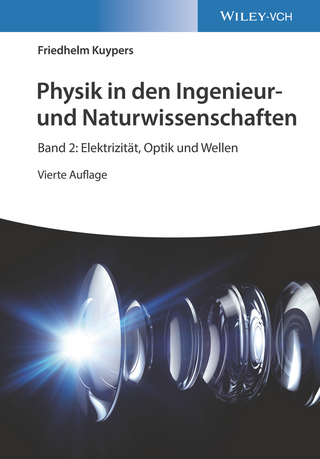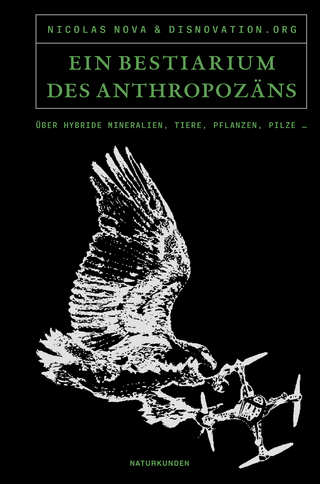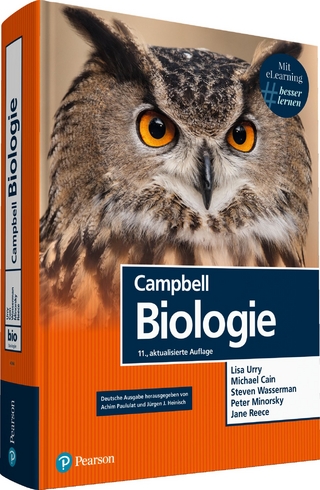
Phytoremediation
Springer International Publishing (Verlag)
978-3-031-17987-7 (ISBN)
Many technologies are in use to clean and eliminate hazardous contaminants from the environment; however, these technologies can be costly, labor intensive, and often distressing to the general public. Phytoremediation is a simple, cost effective, environmentally friendly and fast-emerging new technology for eliminating toxic contaminants from different environments. Phytoremediation refers to the natural ability of certain plants and their associated microbiome (including hyper-accumulators or bio-accumulators) to remove, degrade, or render contaminants harmless. Through this technique, certain species of plants flourish by accumulating contaminants present in the environment. The unique and selective uptake capabilities of plant root and shoot systems, effective translocation, bioaccumulation, and contaminant degradation capabilities of the accumulator plants are utilized in phytoremediation techniques. Phytotechnologies involving the use of plants for contaminant removal gained importance during the last two decades and phytoremediation technology became an effective tool for environmental detoxification because of plants ability to accumulate the contaminants at very high concentrations.
Phytoremediation strategies can remove, degrade, or stabilize inorganic and organic contaminants entering a multitude of ecosystems using green plants and their associated microbial communities. The development and use of phytotechnologies continues to move forward at a steady pace. Researchers recognize the potential of phytoremediation to offer a green, cost effective, eco-friendly and feasible application to address some of the world's many environmental challenges. This book provides significant information to add to the previous volumes published on the topic and can serve as the foundation for the development of new applications that feature the integration of modern research discoveries into new methods to remediate contaminated ecosystems. Moreover, this volume brings recent and established knowledge on different aspects of phytoremediation and nano-phytoremediation, providing this information in a single source that offers a cutting-edge synthesis of scientific and experiential knowledge on polluted environments that is useful for policy makers, practitioners and scientists, and engineers.
Phytoremediation: Management of Environmental Contaminants, Volume 7 highlights the various prospects that are involved in current global phytoremediation research. This book delivers a content-rich source to the reader and can act as a platform for further research studies. It should meet the needs of all researchers working in, or have an interest in this particular field.
lt;b>Dr. Lee Newman is an Associate Professor in the Department of Environmental and Forest Biology, State University of New York. Dr. Lee's primary research interests are in phytoremediation and interactions between plants and endophytic bacteria. She has published a number of refereed journal articles, book chapters, books, and technical reports.
Dr. Abid A. Ansari is assistant professor in the Department of Biology, Faculty of Science, University of Tabuk, Saudi Arabia. Dr. Ansari's research work is concerned with phytoremediation and eutrophication. Dr. Ansari has to his credit a number of research articles of national and international repute, eleven edited books, and a number of book chapters on varied aspects of his field of research. He has been awarded Scientist of the Year and Environmentalist of the Year by the National Environmental Science Academy, India, and Research Excellence by the University of Tabuk.
Dr. Sarvajeet Singh Gill is currently working as Professor (Asstt.) at Centre for Biotechnology, Maharshi Dayanand University, Rohtak, Haryana, India. Dr. Sarvajeet Gill's research includes abiotic stress tolerance in crop plants, reactive oxygen species signaling and antioxidant machinery, gene expression, helicases, crop improvement, transgenics, nitrogen & sulfur metabolism and plant fungal symbiotic interactions. Together with Dr. Narendra Tuteja at ICGEB, New Delhi, he worked on plant helicases for abiotic stress tolerance. His research uncovered new pathways to plant abiotic stress tolerance and indicates the potential for improving crop production at sub-optimal conditions. Sarvajeet Gill has edited several books with Springer, Wiley, Elsevier, CABI etc and has a number of research papers, review articles, and book chapters to his name. Recently, Dr. Sarvajeet Gill conferred with INDIA Research Excellence & Citation Award - 2017 from Clarivate Analytics (Web of Science).
Dr. M. Naeem is an Assistant Professor in the Department of Botany at Aligarh Muslim University, India. His research focuses on escalating the production of commercially important medicinal and aromatic plants and their active principles using a novel and safe technique involving depolymerized polysaccharides as well as the application of potent PGRs. His research also focuses on abiotic stress tolerance in medicinal plants. He has published around 100 research papers in reputable International journals. Also, he has authored ten books and co-authored several book chapters published by international publishers. Based on his research contributions, he has received multiple awards and recognitions.
Dr. Ritu Gill is currently working as Professor (Asstt.) at Centre for Biotechnology, Maharshi Dayanand University, Rohtak, Haryana, India. Dr. Gill is working on phytoremediation, plant abiotic stress and molecular aspects of host-parasite relations. She has published a number of refereed journal articles, book chapters, and books. She has been awarded with various research fellowships along with the Young Scientist Award by the Indian Society for Parasitology.
SECTION-1: OVERVIEW OF CURRENT PHYTOTECHNOLOGY & PHYTOREMEDIATION APPLICATIONS.- Chapter 1. Phytoremediation and Management of Environmental Contaminants: An Overview.- Chapter 2. Phytoremediation and Contaminants.- Chapter 3. Tentative Title: Phytoremediation by Wild Weeds: A Natural Asset.- Chapter 4. Phytoremediation: Sustainable and Organic Technology for the Removal of Heavy Metals Contaminants.- Chapter 5. Structure and Function of Heavy Metal Transporting ATPases in Brassica species.- Chapter 6. Bioformulations for Sustainable Phytoremediation of Heavy Metal Contaminated Soil.- SECTION-2: PLANNING AND ENGINEERING APPLICATIONS TO PHYTOREMEDIATION.- Chapter 7. Application of Electroremediation Coupled with Phytoremediation Techniques for the Removal of Trace Metals in Sewage Sludge.- SECTION-3: PHYTOREMEDIATION APPLICATIONS FOR CONTAMINATED WATER AND SOIL.- Chapter 8. Phytoremediation of Heavy Metals by Trapa natans in Hokersar Wetland,a Ramsar site of Kashmir Himalayas.- SECTION-4: PHYTOREMEDIATION USING MICROBIAL ASSEMBLAGES IN WATER AND SOIL.- Chapter 9. Spinoffs of Phyoremediation and/or Microorganisms Consortium in Soil, Sediment and Water Treatments and Improvement: Study of Specific Cases and Its Socioeconomic and Environmental Advantages.- Chapter 10. Applying Amendments for Metal(loid) Phytostabilization: Effects on Biogeochemical and Microbiological Processes in Soils.- Chapter 11. Tentative Title: Rhizodegradation: the Plant Root Exudate and Microbial Interactions.- Chapter 12. Role of Microorganisms in the Remediation of Toxic Metals from Contaminated Soil.- SECTION-5: PHYTOREMEDIATION OF ORGANIC AND INORGANIC CONTAMINANTS AND ORGANIC-INORGANIC MIXTURES.- Chapter 13. Prospects for the Use of Sorghum bicolor for Phytoremediation of Soils Contaminated with Heavy Metals in Temperate Climates.- Chapter 14. Comparative Effect of Cadmium on Germination and Early Growth of Two Halophytes: Atriplex halimus L. and A. nummularia Lindl. for Phytoremediation Applications.- Chapter 15. Phytoremediation of Soils Polluted by Heavy Metals and Metalloids: Recent Case Studies in Latin America.- SECTION-6: NANOTECHNOLOGY IN MANAGEMENT OF ENVIRONMENTAL CONTAMINANTS.- Chapter 16. Nano-phytoremediation and its Applications.- Chapter 17. Potentials and Frontiers of Nanotechnology for Phytoremediation.- Chapter 18. Nanotechnology in the Management of Environmental Contaminants.- Chapter 19. Nanotechnologies and Phytoremediation: Pros and Cons.- Chapter 20. Nanotechnology in Phytoremediation - Applications and Future.- Chapter 21. Nano-phytoremediation: The Successful Combination of Nanotechnology and Phytoremediation.- Chapter 22. Nanobioremediation and Its Application for Sustainable Environment.- Chapter 23. Nanoparticles Assisted Phytoremediation of Polluted Soils: Potential Application and Challenges.- Chapter24. A Systematic Analysis of Nanotechnology Application in Water Contaminations Removal.- Chapter 25. Nanoparticles-based Management of Cadmium Toxicity in Crop Plants.- Chapter 26. Heavy Metal Remediation by Nanotechnology.- Chapter 27. Phytoremediation and Management of Environmental Contaminants: Conclusion and Future Perspectives.
| Erscheinungsdatum | 16.02.2023 |
|---|---|
| Zusatzinfo | XXX, 609 p. 78 illus., 68 illus. in color. |
| Verlagsort | Cham |
| Sprache | englisch |
| Maße | 155 x 235 mm |
| Gewicht | 1118 g |
| Themenwelt | Naturwissenschaften ► Biologie ► Allgemeines / Lexika |
| Schlagworte | bioremediation • Environmental Contaminants • Heavy Metal Contamination • Nano-phytotechnology • Phytoremediation • Soil Remediation |
| ISBN-10 | 3-031-17987-0 / 3031179870 |
| ISBN-13 | 978-3-031-17987-7 / 9783031179877 |
| Zustand | Neuware |
| Haben Sie eine Frage zum Produkt? |
aus dem Bereich


